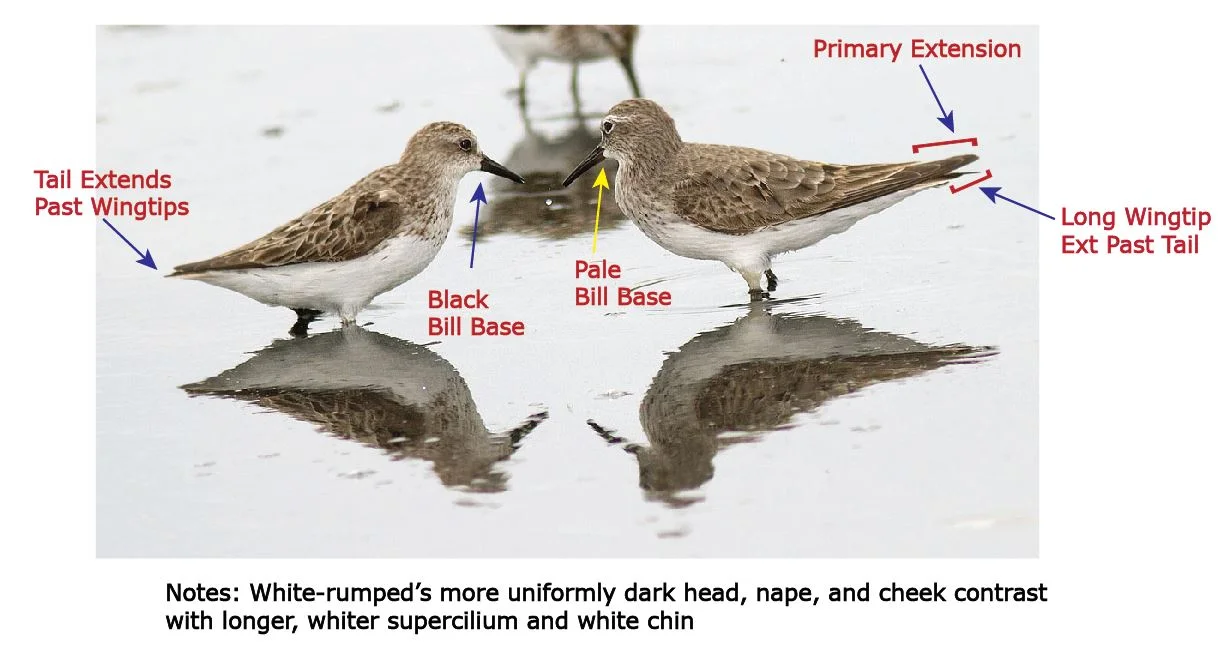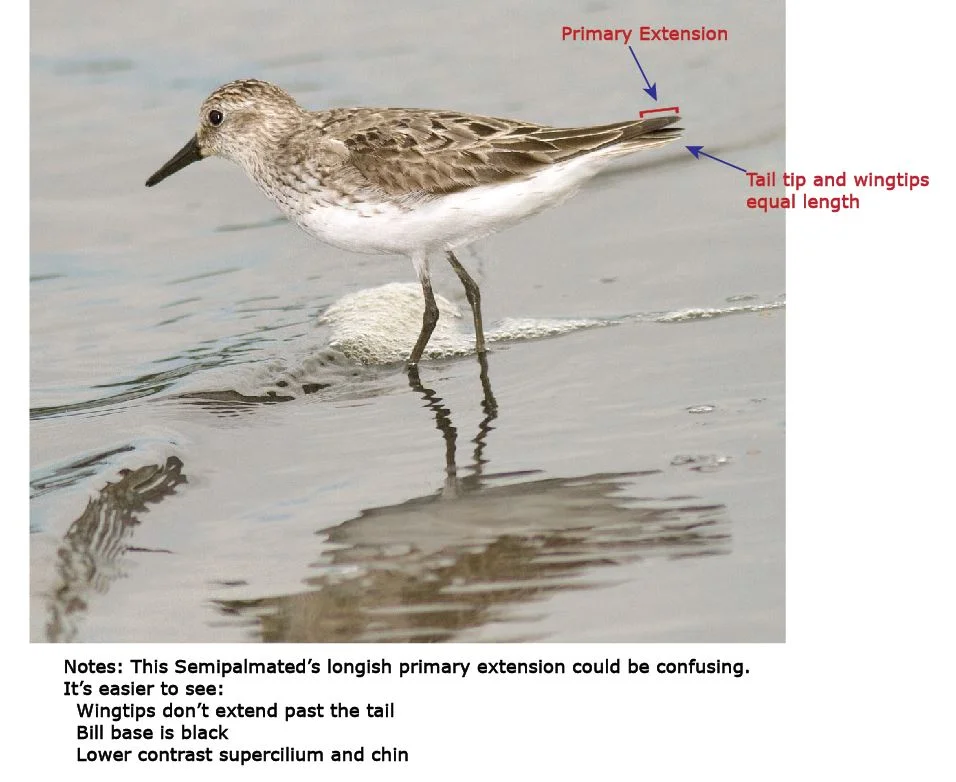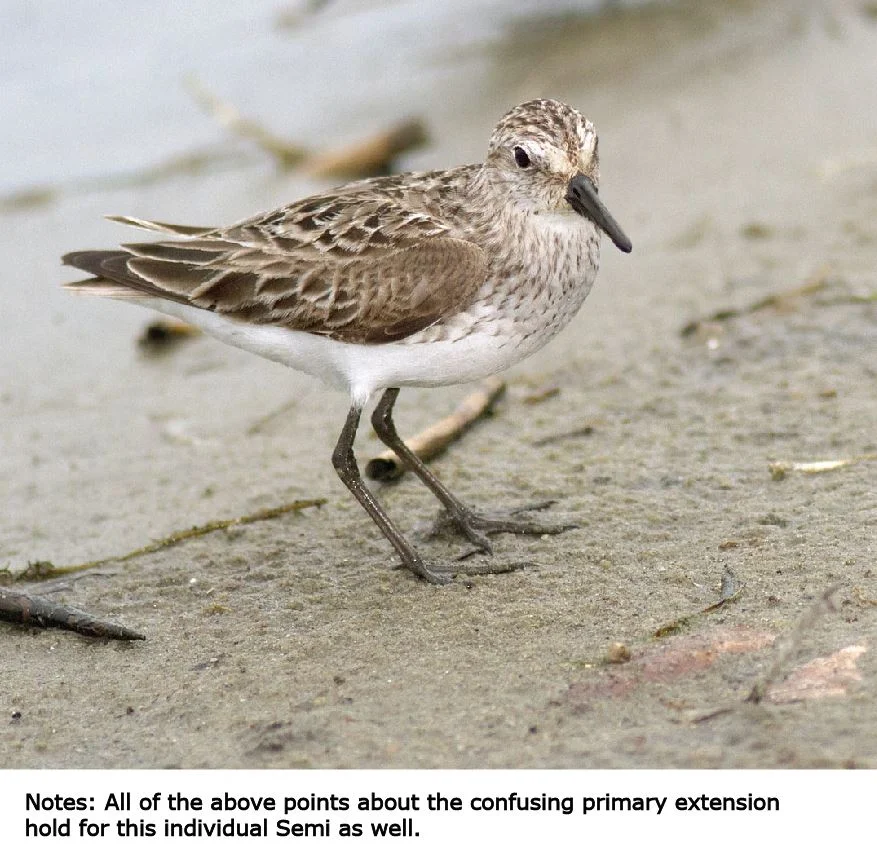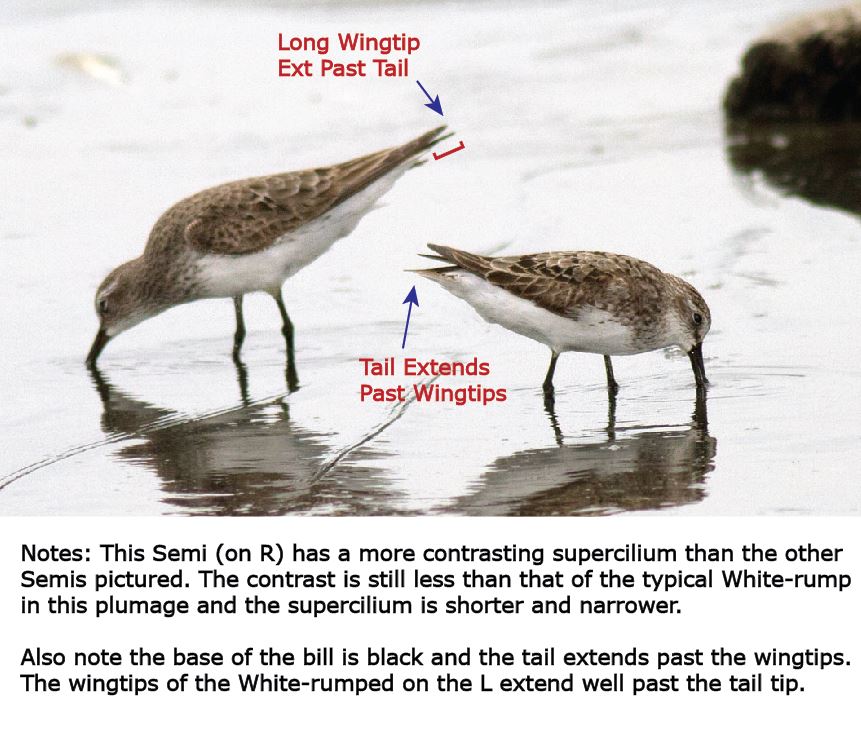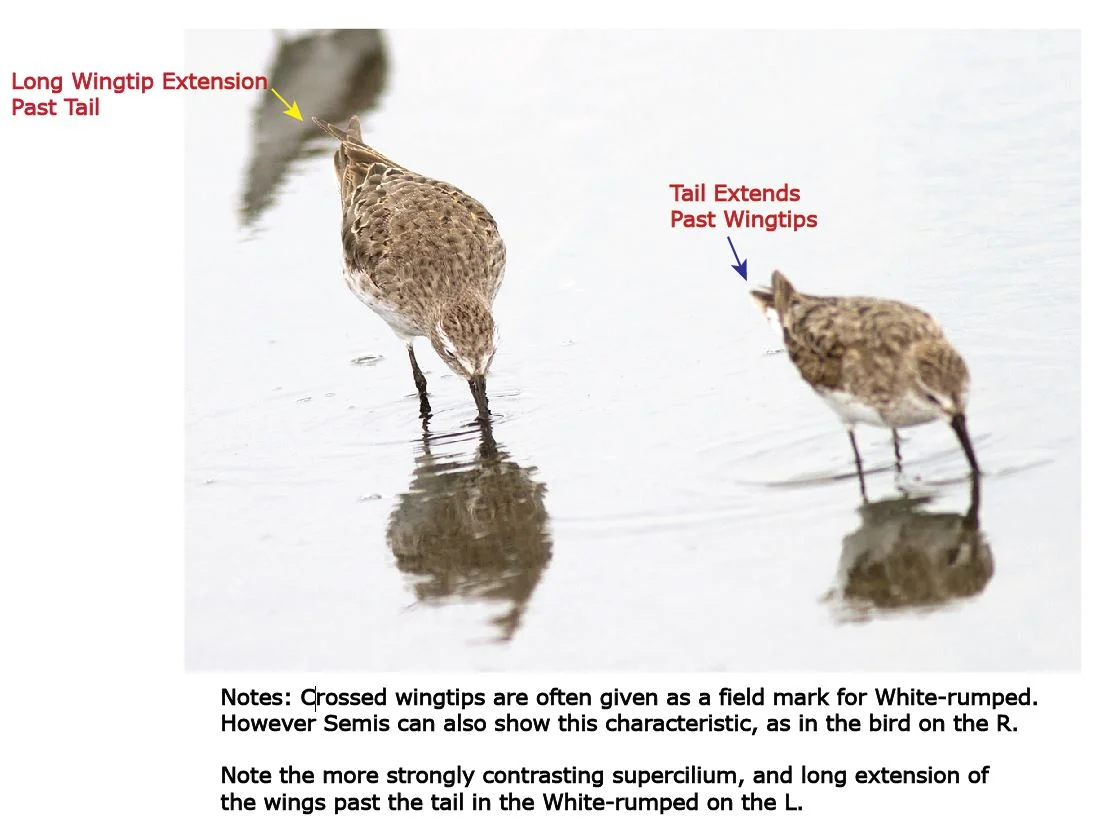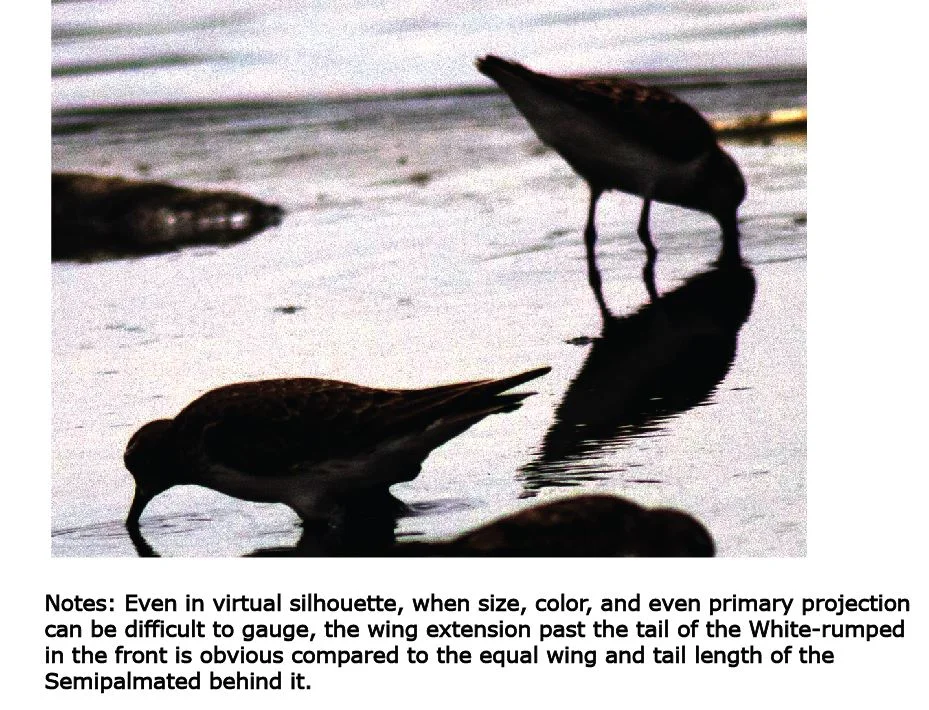Easy ID Points for Separating White-rumped and SemiPalmated Sandpipers
/SEPARATING WHITE-RUMPED AND SEMIPALMATED SANDPIPERS
SOME EASY-TO-USE ID POINTS
During fall migration, finding a White-rumped Sandpiper amidst a large flock of Semipalmated Sandpipers can sometimes be challenging. Usually, once a White-rumped has been found, its larger size, longer, more attenuated shape, and long primary extension are obvious. When this comparison is available confidence in the ID process is restored and all is well.
However, relying on just the traditional ID point of White-rumped’s longer primary extension can often be difficult and lead to confusion (this based on time with various groups during shorebird walks…)
This photo-article proposes a few additional ID points that are sometimes easier-to-use, especially with isolated birds, or with Semipalmateds that are extra worn or molting or are showing more-than-expected primary projection. This article references fall birds that are in worn breeding plumage or beginning their molt into basic plumage.
The additional ID points for this article are:
• The length the wings extend past the tail
• The pale base of White-rumped’s bill
• The contrast of White-rumped’s more uniformly dark head with the white supercilium and chin.
For isolated birds, or when searching a flock of Semipalmated Sandpipers, the main issue is that any one bird’s primary extension can be difficult to see, to gauge, and can even sometimes be fairly long. I’ve seen this lead to “false positives” many times.
The other ID points outlined in this article are often easier-to-use with confidence, and can help prevent these uncertain guesses or false positives when searching for White-rumps.
I’ll start with some annotated photos and then present a number of photos of both Semipalmated and White-rumps for study.
CONFUSING SEMIPALMATED PRIMARY PROJECTION
AND OTHER ID POINTS TO USE
THE SOLUTION IS TO USE ADDITIONAL ID POINTS
ADDITIONAL SEMIPALMATED SANDPIPER EXAMPLES
In these next photos, note the characteristics mentioned above:
• The relative length of the wings and tail
• The color of the base of the bill
• The overall contrast of the head, supercilium and chin
WHITE-RUMPED SANDPIPER EXAMPLES
Note how these characteristics differ with White-rumps:
• The relative length of the wings and tail
• The color of the base of the bill
• The overall contrast of the head, supercilium and chin
Copyright 2013 Tom Stephenson
All Photos by Tom Stephenson

